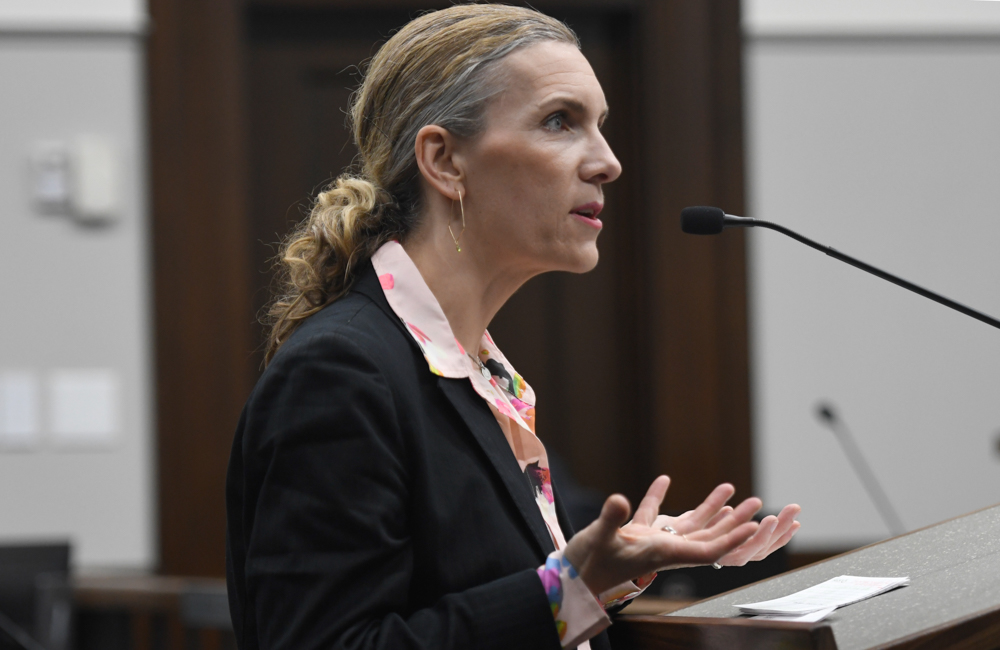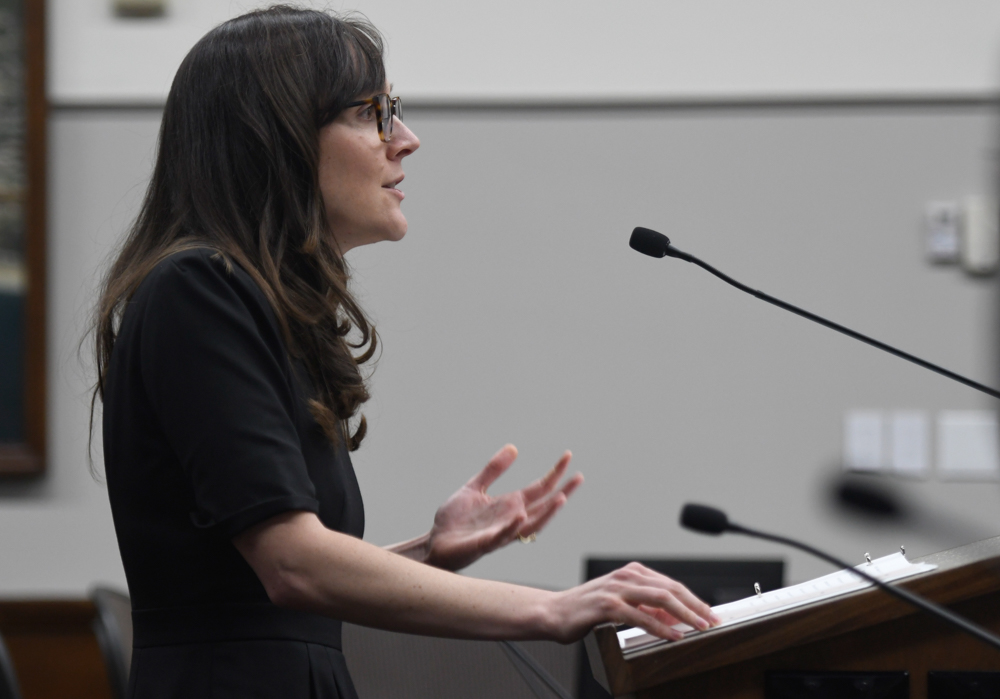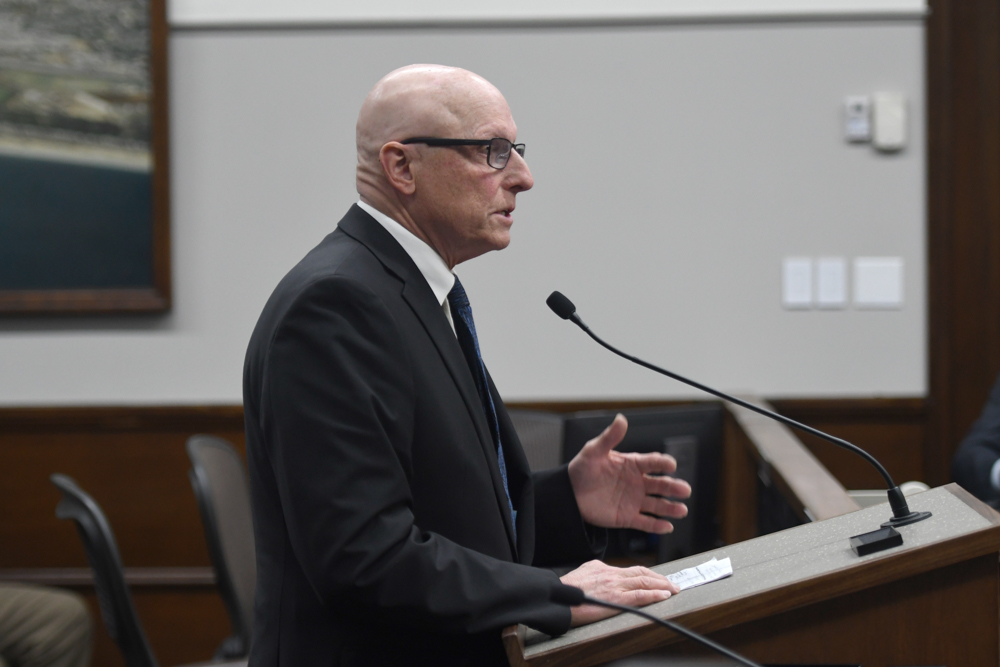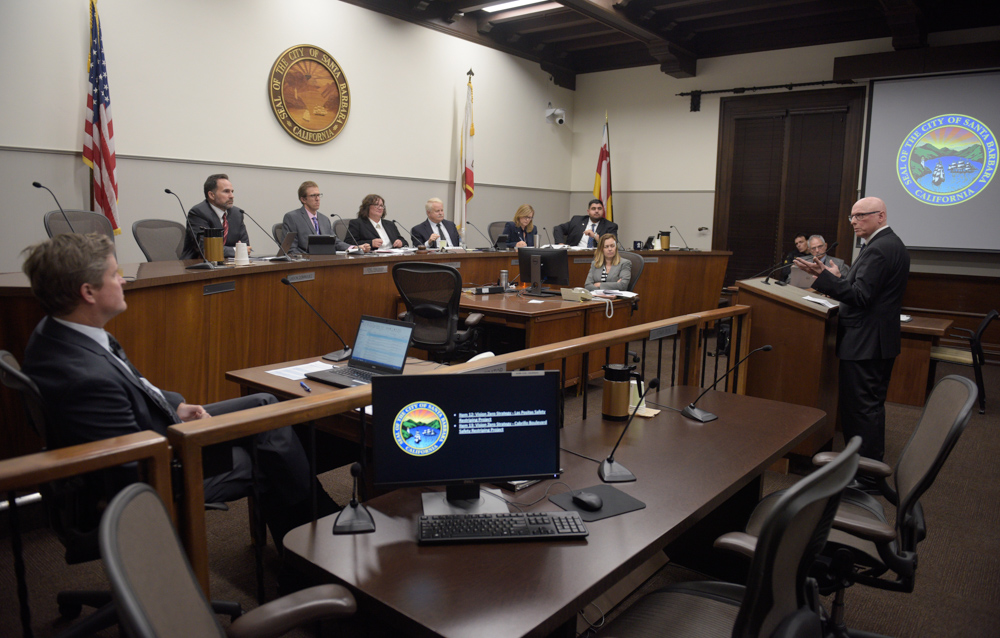Santa Barbara City Council Applicants Vie for One Empty Seat
District 6 Appointment Will Be Made February 12

Seven is the number of the continents. Seven is the number of colors in the rainbow. It’s also the number of dwarfs who kept watch over Snow White. As of Tuesday, February 12, seven will also be the number of voting representatives occupying the Santa Barbara City Council dais. That’s when the council will appoint — and swear-in — a temporary replacement to fill the vacancy created when Gregg Hart stepped off the council as representative for the city’s downtown District 6 earlier this year to begin his new incarnation as county supervisor.
For more than two hours on the evening of February 6 — while much of the nation was listening to President Donald Trump’s State of the Union Address — Mayor Cathy Murillo and her fellow five councilmembers put 10 applicants for the council appointment through their paces. While conventional wisdom suggests there are three clear front-runners — Grant House, Gina Fischer, and Brittany Heaton — many of the applicants, some unknown until now, flat out dazzled; almost all impressed. Most were startlingly poised and articulate. None bombed.

According to the rainbow metrics by which diversity is gauged, six of the applicants are women, and four are men. Two are Latino. At least two spoke Spanish; one spoke four languages, Spanish not being one of them. Two grew up in Santa Barbara. One married into a family with Santa Barbara roots going back 11 generations; one is both the daughter and granddaughter of former city attorneys. Two currently hold high-profile jobs with the County of Santa Barbara; both of those would leave their county jobs to avoid potential conflicts of interest. One had previously served two terms on the council. At least two had young children. Four are north of 60 years old. One vowed not to run for election in November — when voters get to select Hart’s permanent replacement, and one vowed to run regardless of who’s appointed. One appears not qualified to serve because he’s not registered to vote in the district. No information regarding the applicants’ sexual orientation or lack thereof was disclosed. As many as five could be described as millennials. Two clearly represent the right side of the political aisle; two have deep roots in the Democratic Party establishment. Three own small businesses. All but one of the applicants cited the crushing lack of affordable housing as one of the most pressing issues confronting city residents.
Of the 10, Grant House, who runs a sewing machine business, could most readily step in. He served eight years on the council and, before that, in a couple of stints on the Planning Commission. In that time, House distinguished himself as an in-the-weeds wonk with a passion for affordable housing and alternative transportation issues. Out of City Hall for eight years, Grant clearly relished his opportunity to riff wonky before the council. “I’m kind of in heaven here,” he gushed at one point. Among the South Coast’s score-keeping liberal establishment, House is still critically remembered for providing Councilmember Randy Rowse — a squishy moderate with pro-business sensibilities — the critical vote needed to secure the council appointment in a similar process eight years ago. On Tuesday night, House keyed in on Rowse in apparent hopes that Rowse might return the favor. Rowse joked back at one point, saying, “I can’t put my finger on it, Mr. House, but you look really familiar to me.” Whether any debt of reciprocity is enough to sway Rowse is yet to be seen. Rowse asked House “if he were king” what he’d do to improve the housing situation. From there, House basked in the King for a Day sobriquet, responding to questions posed as if he held a royal scepter. Like most of the applicants, House said he’d tweak the city’s controversial Average Unit-size Density (AUD) rental housing incentive program and work collaboratively with developers to increase the number of new rental units targeting the so-called “missing middle” as opposed to high-wage earners. More specifically, House said he’d target the city’s limited resources to help underwrite the cost of rehabbing substandard housing such that the tenants do not find themselves displaced by gentrification. What those resources were was not made clear.

If the council is looking for another applicant steeped in the specialized mechanics of local government, Gina Fischer, assistant to 3rd District Supervisor Joan Hartmann, or Brittany Heaton, a county transportation planner who has chaired the city’s Neighborhood Advisory Council three years running, would fit the bill. Of the two, Fischer has the most obvious political portfolio, having worked on get-out-the-vote campaigns on behalf of numerous Democratic candidates. Fischer, who worked previously for Planned Parenthood and chaired the county’s women commission, brings the most big-name endorsements from prominent politicians and has stressed most overtly the need to have more women on elected bodies. In Santa Barbara County, she noted only 29 percent of all council seats are occupied by women. During her Tuesday-night presentation, Fischer radiated high-energy enthusiasm. She took pains to stress her commitment to historic preservation — she served on the county’s Historic Landmarks Commission — as a counterbalance to her equally strong support for more affordable housing. Fischer stressed the significant threat posed by sea-level rise and climate change. More than other applicants, she stressed the growing importance of disaster response. During recent emergency-response efforts, Fischer saw firsthand problems. “We have a long way to go to improve in terms of disaster preparedness,” she stated. All emergency communications, she continued, must be delivered bilingually; the city’s wildland fire protection plan, she noted, was written in 2004 and needs to be updated. Fischer has vowed to run no matter whom the council appoints. To avoid a conflict of interest, she has said she would step down from her current county job.
More low-key than Fischer and less plugged in politically, Heaton sought to impress with her competence as a county transportation planner. After 13 years on the job, she knows the alphabet soup of all the funding sources keeping massive public works projects afloat. “That’s pavement, that’s bridges, that’s culverts,” she said. “I know I have the experience to get to work right away.” Heaton joined the Peace Corps out of college, doing a stint in Morocco. After that she joined AmeriCorps, working in Illinois. For the past three years, she’s served as chair of the Neighborhood Advisory Council and has recently joined the board of Peabody Charter School, where’s she’s vice president. On affordable housing, Heaton — like many applicants — stressed the need to impose inclusionary requirements on rental housing developments awarded special density bonuses and parking breaks to ensure such housing served working families and not just the well-off. “Development is a privilege, not a right,” she said. She suggested City Hall should also create an information clearinghouse to better connect people looking for a room to rent with homeowners with empty rooms. Heaton acknowledged her county job could create conflicts of interest and announced she would quit her job.
The outcome of next week’s selection process remains anyone’s guess. Several councilmembers have privately stated they were wowed by Meagan Harmon, a real-estate finance lawyer, who grew up in Lompoc, went to Harvard, spent time in Afghanistan, and speaks four languages, three fluently. Young, poised, energetic, and articulate, Harmon said she was moved to run by “the soaring rents and job insecurity” that make life in Santa Barbara for too many people “an insurmountable challenge.” As a kid, she remembered visiting Santa Barbara and being “awestruck.” Harmon serves on the county’s Housing Authority board and said she would make challenges to the city’s AUD rental housing program to ensure it benefited working families. She’d support a requirement that a certain percentage of all units built with density bonuses and parking breaks target middle-income families. “That’s the number one thing to do.”

Gabriel Escobedo, likewise, made a strong impression, stressing the need for “housing first” strategies to deal with chronically homeless individuals stuck in the revolving door from the streets to county jail to hospital emergency rooms and ultimately to the morgue. “We cannot let the perfect get in the way of the good,” he said, acknowledging that 20 percent will be back on the streets within two years. The money saved from the 80 percent who get housed, he argued, would more than offset the failures. “Climate change is real,” he stated, arguing that City Hall needs to be more aggressive about alternative sources of green energy not so susceptible to catastrophic interruption. Likewise, he argued City Hall needed to be more open to “tiny homes” and less-conventional housing approaches.
Julia Lara, a program manager for the Foodbank with prior experience with Hospice of S.B., said she wanted the appointment to better deal with affordable housing, mental health, and food insecurity. She currently serves on the county’s Behavioral Wellness Commission. Lara, who is fluent in Spanish, highlighted the importance of City Hall reaching out to all sectors of the community before important decisions — like the location of the new police station — are rendered. “People don’t feel their voices are heard.”
Waging an impressively aggressive email campaign is Kate Carter, who ran several businesses before starting LifeChronicles, a video production business specializing in end-of-life narratives that include Santa Barbara’s richest and poorest. Current Councilmember Oscar Gutierrez works for her. Carter talked about re-creating downtown in the face of new economic realities where many malls across the country have closed. “They’re not coming back,” she said. She cited the success of the Night Market, a confabulation of small pop-up businesses that occupied the old downtown Macy’s building over Christmas vacation, as a positive new direction.
Matthew Nehmer, CEO of the Santa Barbara and Ventura Colleges of Law, blew councilmembers’ collective hair back with his high-octane presentation, describing his considerable experience as an educational administrator steeped in public affairs in Chicago and Washington, D.C. Santa Barbara should look more into bringing other higher education downtown, suggesting CSU Channel Islands would be interested. Nehmer is not from Santa Barbara or even California, but from a Michigan town of only 800, so small he said it didn’t have even a stoplight. Education was his ticket out. With a PhD in leadership theory and organizational dynamics, he suggested he might help the city borrow ideas from other cities that have grappled with many of the same challenges Santa Barbara now faces. If appointed, he promised not to seek election in November.
By contrast, Bonnie Raisin — a perennial voice of conservative opposition at City Hall — stressed her local roots; both her father and grandfather had served as city attorney. Her work as a drug and alcohol counselor made her skeptical about the values of medicinal marijuana. The only time she got high, Raisin said, made her feel like she was driving backward in a car.

Scott Wenz, a longtime advocate with Cars Are Basic, was most caustic and critical in his remarks about the inner machinations of City Hall. When staff members lie, he pledged to call them out. As a small landlord and a third-generation Santa Barbaran, Wenz expressed skepticism that increased housing densities will ever translate to affordability. Neighborhoods are too jammed as it is; there’s no place to put new people, he objected. And city streets are already overcrowded. “Where do you draw the line?” he asked his interlocutors.
After the meeting, there did not appear to be one obvious slam-dunk candidate able to garner the necessary four votes to win the appointment. For the current councilmembers and the general public, the race remains a head-scratcher.



